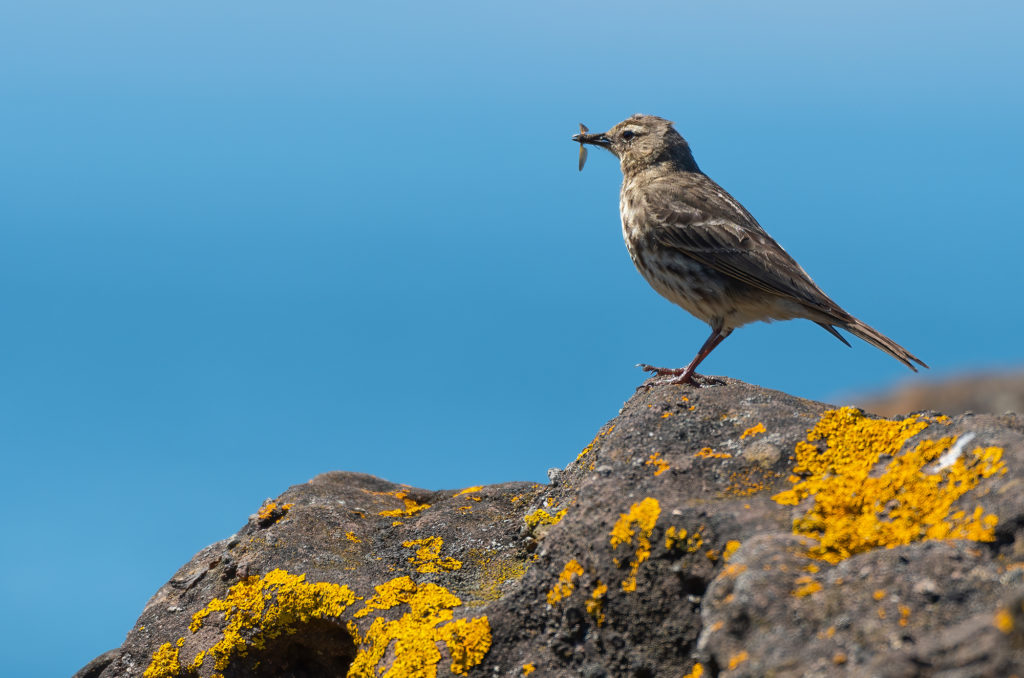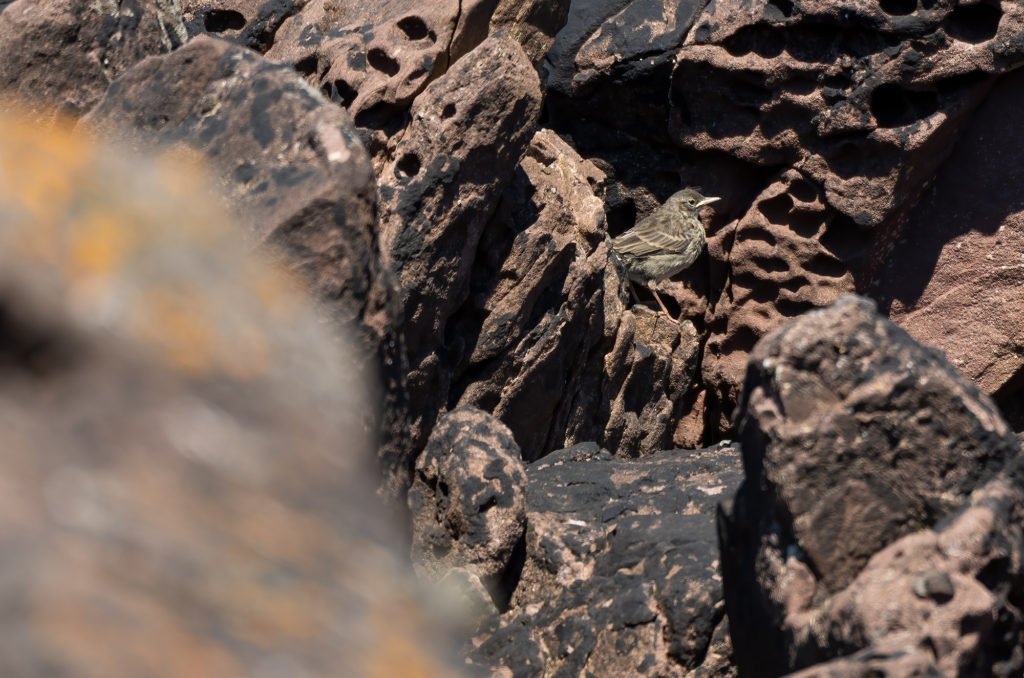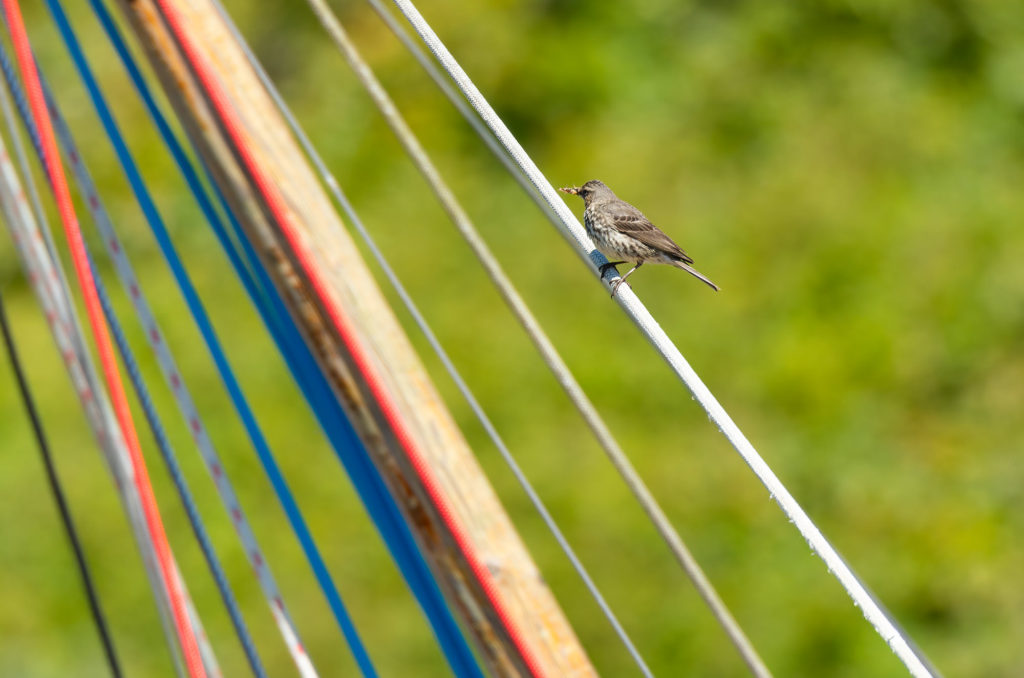Like most of our weekend excursions, our trip to the coast earlier this month yielded the unexpected. We headed off on a hot and sunny day, anticipating good views of peregrines in their nest on a cliff (from a distance, obviously) – a location we had previously spotted. And while we did see a bit of peregrine versus buzzard action, the highlight of our walk ended up being very different to the high-flying birds of prey.
After time spent watching the peregrine nest site high up on the cliff face for any movement through my long lens and seeing nothing, we decided to continue our stroll along the coastline. On approaching the rocks at the water’s edge, my partner was verbally abused by a loud bird perched on a rock. He moved away in the direction of another rock when a different bird popped up and began hurling abuse. It quickly became apparent that these rock pipits had fledglings or nests nearby and, having listened to their not-very-subtle warnings, we kept our distance so that they could carry on feeding their young.
When it comes to nesting, it is the female rock pipit that builds the cup-shaped nest on a rock or in a crevice. It is made from dried grass, leaves and seaweed and lined with animal hair, fine grasses and feathers. Rock pipits lay 4-5 eggs, which are incubated by the female for 14 days while the male guards the nest. The chicks are reared by both parents and fledge 15 days after hatching.

To avoid distressing the rock pipit parents, I took up a position on a rock a comfortable distance away and began to capture some images of their behaviour. The adults were busily bringing back invertebrate prey for their broods, but I had no idea if they were in the nest or had fledged as it was impossible to see where they were disappearing amongst the rocks. These birds were working incredibly hard – not only to catch food but to keep their young hidden.
I did manage to capture a couple of images of one fledgling, but only after a long period of watching the parents zooming around while keeping an eye on the rocks for any signs of movement. As you can see in the image below, the young bird in question was well camouflaged and quickly crept back into a crevice.

Walking further along the shore, we came across an ideal hunting ground for the rock pipits – plenty of washed-up seaweed. The birds bounced around, snatching up whatever flies and other insects were hiding in the tangle of crispy brown fronds. Despite sitting nearby, the speed of their movement and the cluttered background of fishing flotsam and jetsam in the little harbour area meant that getting decent images of the birds around the seaweed was difficult. I deleted most of my efforts. The image below was the only one I kept. This bird flew up onto a fishing boat, providing the opportunity to capture the colourful lines in the background, in contrast to the muted tones of the rock pipit plumage.

I am grateful for the intimate views we got of these bustling birds. It turns out that posing pipits can be a pretty great subject to photograph.

